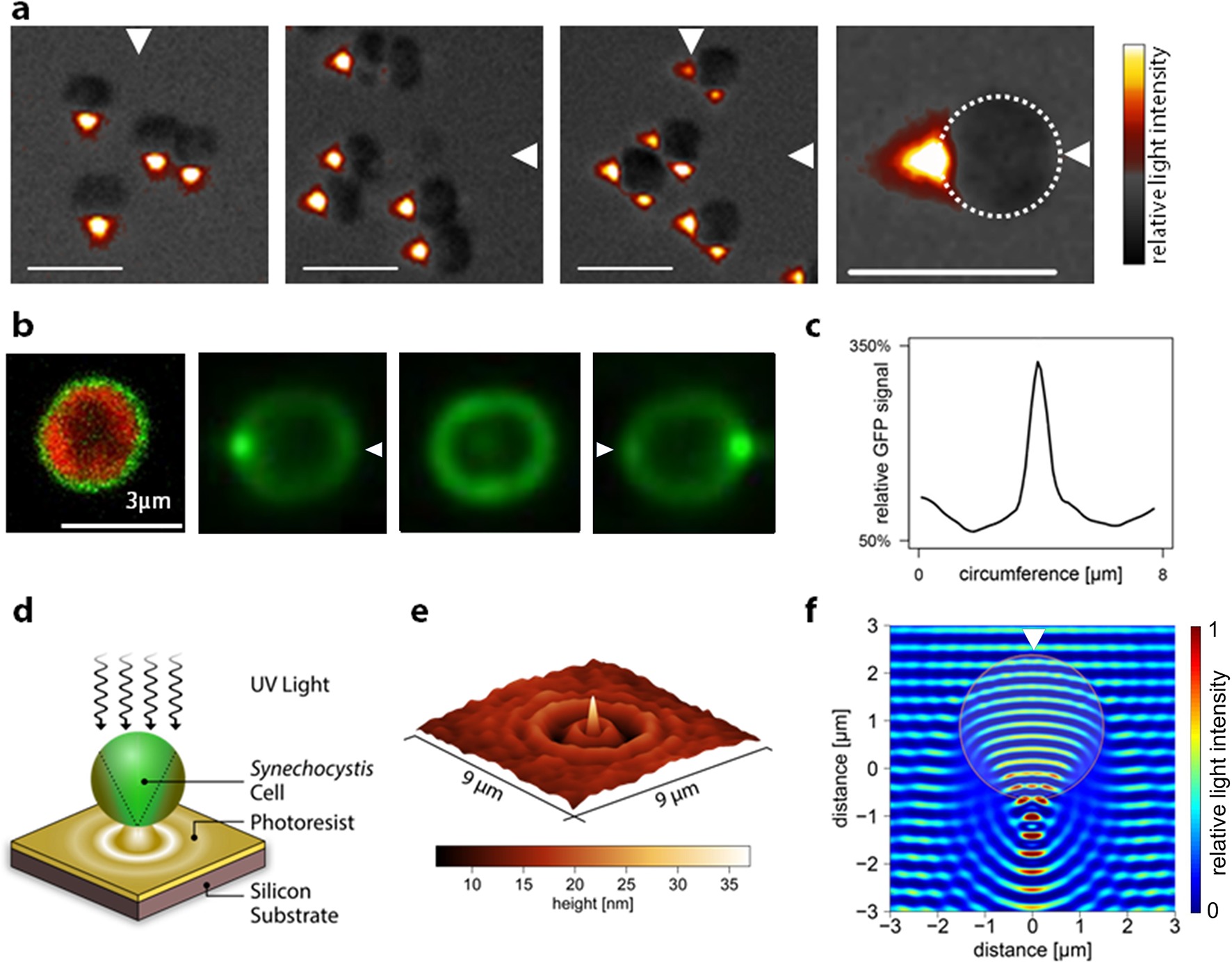While it has long been known that some cyanobacteria move (or crawl) towards light, how these cells detect the direction and source of light was undescribed until recently. In Cyanobacteria use micro-optics to sense light direction, Schuergers et al. (2016) investigated Synechocystis phototaxis and found that each cell acts as a microscopic spherical lens, focusing an intense light spot close to the opposite side of the cell from the light source and the direction of movement.

See the article for more details and check out these two videos showing the crawling Synechocystis:
http://elifesciences.org/content/5/e12620v1/media1
http://elifesciences.org/content/5/e12620v1/media2
Moving towards a light source is an essential function for this fascinating and ancient group of photosynthetic organisms that likely transformed the earth’s atmosphere and contributed to the origins of multicellular life.
How does this relate to the microbiology of the built environment, you ask? Well building surfaces (and rocks and soil and water and…) are coated in biofilms that include a lot of cyanobacteria. And the idea that they might be crawling around up there, using lenses to focus light seems pretty awesome (and potentially useful).
Here are a few recent publications on cyanobacteria on buildings:
Nowicka-Krawczyk, Paulina, et al. “Diversity of an aerial phototrophic coating of historic buildings in the former Auschwitz II-Birkenau concentration camp.” Science of The Total Environment 493 (2014): 116-123.
Keshari, Nitin, and Siba Prasad Adhikary. “Diversity of cyanobacteria on stone monuments and building facades of India and their phylogenetic analysis.” International Biodeterioration & Biodegradation 90 (2014): 45-51.
Pandey, V. D. “Rock-dwelling cyanobacteria: survival strategies and biodeterioration of monuments.” Int. J. Curr. Microbiol. App. Sci 2.12 (2013): 519-524.
Wasserbauer, Richard, et al. “The Occurrence of Cyanobacteria and Green Algae on Facades of Historical Sacral Buildings.” Advanced Materials Research. Vol. 1000. Trans Tech Publications, 2014.
Adhikary, Siba Prasad, et al. “Cyanobacteria in biofilms on stone temples of Bhubaneswar, Eastern India.” Algological Studies 147.1 (2014): 67-93.